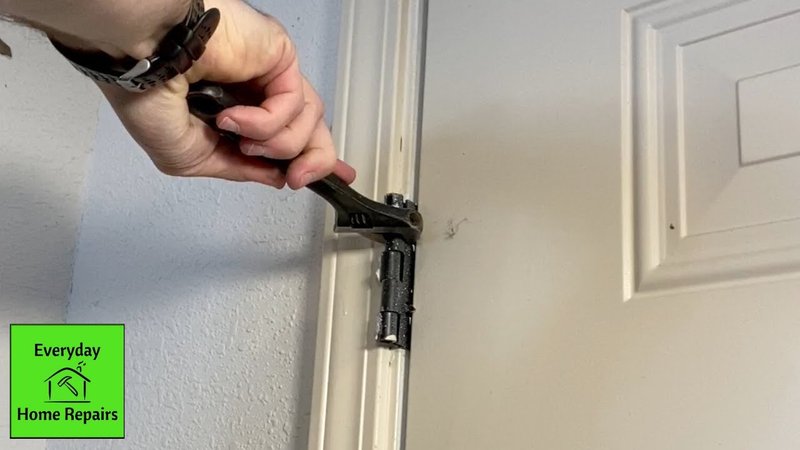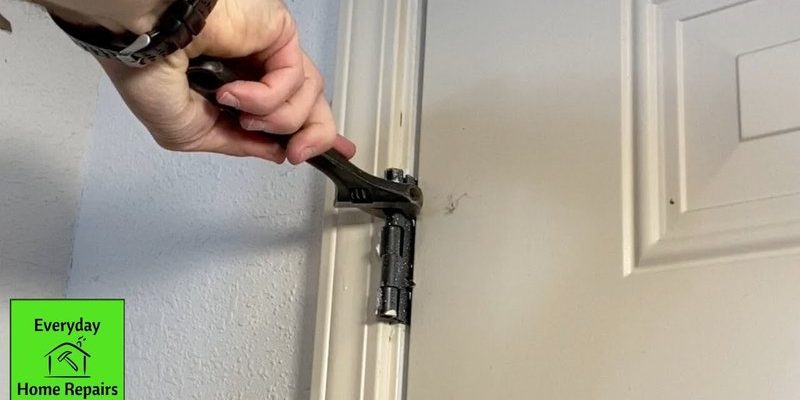
Honestly, the material around most exterior door seals—like on a Therma-Tru or Pella—should stay grippy enough to keep out drafts, but definitely not sticky enough to collect every speck of dust (or dog fur) in the neighborhood. If you’re here scratching your head, wondering why this happens or what you did “wrong” with your cleaning, you’re not alone. Let’s break down what’s really going on, why your exterior door seal gets sticky after cleaning, and how to fix it so your entryway stays airtight and touchable.
What Causes Door Seals to Get Sticky After Cleaning?
Here’s the thing: most exterior door seals are made from flexible materials like rubber, vinyl, or silicone. They’re chosen because they squish down to block out noise, moisture, and bugs—all things you want out of your house. But these materials are sensitive to certain cleaning products and even how you wipe them down.
- Chemical residue: Many standard cleaners (like all-purpose sprays, bleach, or even vinegar) can leave behind a film that feels sticky once it dries. This is especially true if you don’t rinse the area with water after cleaning.
- Breakdown of material: Over time, strong chemicals can actually start to break down the oils or plasticizers that keep rubber or vinyl seals flexible. As these oils leach out or react with cleaning agents, the surface can get tacky.
- Improper rinsing: Even using just soapy water can do this if the soap isn’t thoroughly rinsed away. Soap residue is a magnet for dust and grime, which can make your door gasket feel sticky, especially in humid weather.
It’s less about how much you scrub and more about what’s left *after* you clean. If you’ve ever cleaned a remote control’s silicone buttons and noticed they felt weirdly sticky after, it’s a similar thing here: residue and breakdown.
Are Certain Cleaning Products Making It Worse?
You might be wondering if there’s a list of “bad” cleaners for exterior door seals—kind of like how you’d never dunk a Roku remote in water. Well, yes and no. The issue usually comes down to harsh chemical content or additives.
- Avoid ammonia and bleach: These can strip essential oils from rubber, causing it to dry out, crack, or become sticky.
- Watch for oily cleaners: Some products designed for shine (like kitchen countertop sprays) can leave a greasy film behind, which turns tacky fast—especially once dust lands on it.
- Don’t use concentrated dish soap: Sounds harmless, but without a thorough rinse, it acts like glue for debris and actually attracts more gunk over time.
The safest way to clean is with a mild soap diluted in warm water—think the same approach you’d use for cleaning the battery contacts on a remote without damaging them. Always use a damp (not soaking) cloth, wipe gently, and follow with a clean water rinse. If the sticky feeling sticks around, there’s probably residue or the seal is breaking down and might need more help.
Why Does Humidity or Weather Make Stickiness Worse?
Let me explain: door seals live outside, so they’re exposed to temperature swings, rain, and sunlight. These elements all speed up the breakdown of the seal, especially if it’s already been weakened by cleaning chemicals or age.
- Humidity: When the air is damp, any sticky residue left over becomes even more noticeable, almost like sugar dissolving into syrup. The seal stays tackier for longer, and dirt sticks more stubbornly.
- Heat: Warm weather can soften plastic or rubber, which brings sticky oils to the surface. This makes any leftover soap or cleaner cling even tighter.
- Sunlight: UV rays break down some types of door gasket materials, causing them to weep sticky plasticizers or even become brittle and crumbly over time.
If your exterior door faces the sun or is on the “weather” side of your house, you may notice stickiness more in summer. Pair that with cleaning and you get a perfect storm for tacky seals.
How Can I Safely Clean Exterior Door Seals Without Causing Stickiness?
If you’re trying to avoid sticky surprises, it’s all about gentle technique and the right products.
- Start with a soft brush or dry cloth to remove loose dirt, spiderwebs, and debris. No need to get fancy—just a quick once-over.
- Mix a few drops of gentle soap in a bowl of warm water. Think unscented dish soap or baby shampoo. Dampen a microfiber cloth, wring it out well, and gently wipe down the weatherstripping or door seal.
- Rinse with a second cloth that’s just damp with clean water. This step is crucial—otherwise, soap residue lingers and gets sticky.
- Pat dry with a towel. Never leave the seal wet, since moisture can attract more grime or cause mildew.
Honestly, most people skip the “rinse” step, but it’s what keeps seals smooth instead of sticky (not unlike rinsing battery contacts after you clean them, to prevent corrosion). For door brands like Andersen, Pella, or JELD-WEN, this gentle method works on almost every type of exterior seal.
Can I Remove Stickiness If It’s Already Happened?
Sure, you’re staring at your door thinking, “Too late—mine’s already a mess.” Don’t panic, because you’ve got options before replacing anything.
- Do a residue reset: Try wiping the sticky area with a cloth dampened with pure water—no soap. If that doesn’t help, a mixture of equal parts water and white vinegar (test in a hidden spot first) can break down old residue.
- Avoid harsh scrubbing: Don’t use scouring pads or abrasive cleaners, as they’ll rough up the seal and create even more “grab” for sticky stuff to cling to.
- Let it dry fully: Sometimes seals feel sticky when they’re simply damp. Give it a few hours of airflow before you decide it’s ruined.
- Try a silicone lubricant: If the stickiness is from aging rather than residue, a light coat of silicone-based lubricant (not WD-40—it can attack plastic) can restore smoothness. Spray a little onto a clean rag and wipe it on gently.
If nothing works, the seal may be too far gone—constant stickiness, cracking, or crumbling means it’s time for a replacement. The good news: most door weather seals are easy to swap and pretty affordable, plus new ones won’t have the sticky drama.
Is Sticky Door Seal a Sign I Should Replace It?
Here’s where you have to play detective. Not every sticky seal needs to be tossed, but sometimes, it’s a symptom of deeper problems.
- Check for cracking, gaps, or crumbling. If your weather seal feels tacky and looks worn out, you’re losing energy efficiency—not to mention inviting pests and drafts.
- If you notice strong odors or discoloration (like a sour or chemical smell), the seal’s chemicals may be breaking down too much to fix, and replacement is safer.
- Frequent stickiness after cleaning—even when you rinse and dry well—usually means the material has lost its integrity. This happens with age or after years of cleaning with the wrong products.
New seals for popular door brands can be found at any hardware store or direct from manufacturers like Pella or Therma-Tru. Swapping out the old gasket is often as simple as pulling it out and snapping in the new one—no need to call a pro unless the frame’s damaged.
Is There a Way to Prevent Future Stickiness?
Absolutely. A bit of prevention not only saves you sticky hands but can actually extend the life of your door weatherstripping.
- Clean gently and infrequently. Don’t overdo it—a good wipe-down every couple of months is enough unless your region is extremely dusty.
- Stick to the right cleaners. Always use gentle soap and rinse with plain water. Skip anything labeled as “degreaser” or “multi-surface shine.”
- Condition the seals occasionally with a silicone-based lubricant. This creates a water-resistant, non-sticky layer and keeps the seal supple in all weather.
- Watch for early signs of breakdown—like stickiness, fading, or loss of springiness—so you can clean or replace before bigger issues show up.
It’s like syncing a universal remote instead of waiting until you lose all function—catching seal problems early means fewer annoyances and better protection for your home.
How Weather, Age, and Door Brand Affect Seal Performance
You might be thinking, “Does the type of door or brand really matter?” Turns out, it can.
- Material quality. High-end door brands often use better rubber compounds or UV-stabilized vinyl for their weather seals. These hold up longer and are less likely to get sticky with basic care.
- Climate factor. If you live somewhere with wild temperature swings or lots of rain, even premium seals can gunk up faster. Frequent freeze-thaw cycles or constant humidity take a toll.
- Replacement ease. Some brands use clip-in or slide-in seals, making it simple to swap them out when they get old or sticky. Others require more effort, sometimes needing you to reset the whole door threshold or jamb.
If you see stickiness on a new Andersen or Pella door, it’s probably residue and not failure—try the cleaning tips above first. For older or builder-grade doors, age and exposure may mean the seal is simply due for a refresh.
A sticky exterior door seal isn’t just annoying—it’s a signal from your door that it needs a little less “elbow grease” and a little more TLC. The right cleaning routine keeps it smooth, seals up drafts, and keeps the entryway welcoming instead of tacky.
Wrapping Up: Keeping Your Exterior Door Seal Clean (And Not Sticky)
Dealing with a sticky exterior door seal after cleaning can feel like a weird reward for your hard work—definitely not what you signed up for. Most of the time, the culprit is leftover cleaning product, harsh chemicals, or age-related breakdown. By cleaning gently, rinsing well, and using a silicone conditioner when needed, you can keep that weatherstripping feeling smooth and doing its job.
Seals are a small part of your door setup, but they make a big difference in comfort and efficiency. Next time you clean, use less soap, rinse more, and don’t be afraid to replace the seal if sticky becomes the new normal. Your hands—and your home—will thank you.
